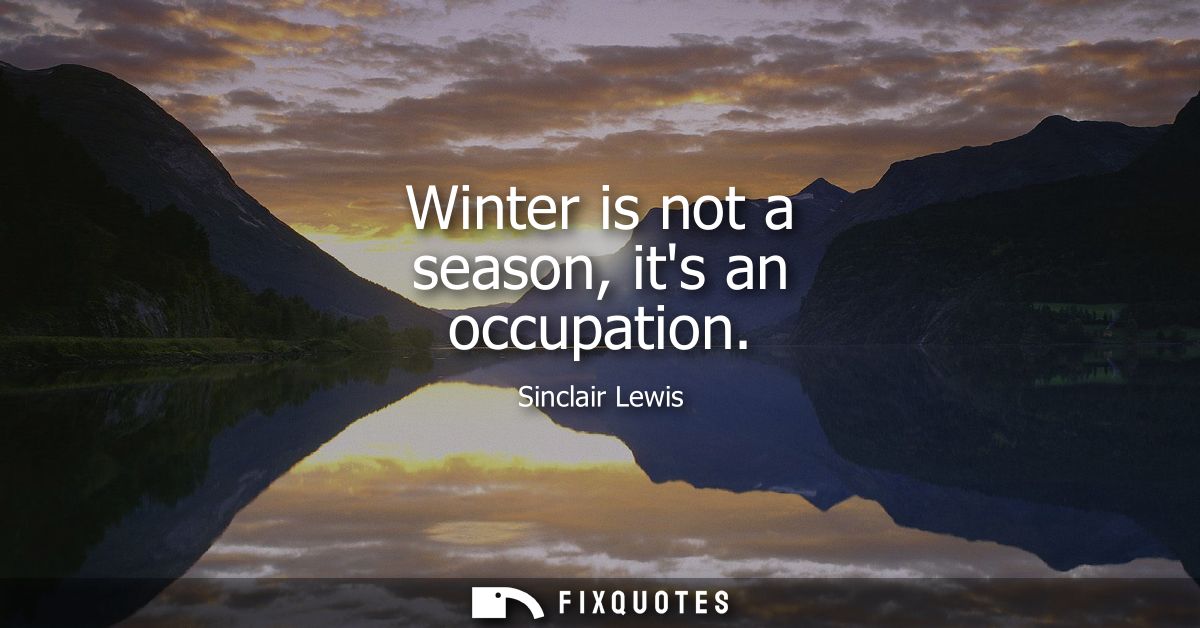"Winter is not a season, it's an occupation"
About this Quote
Sinclair Lewis’s statement, “Winter is not a season, it’s an occupation,” captures the immersive and demanding nature of winter, especially in regions where cold weather shapes daily life. Rather than viewing winter as a mere period marked by chill and snow, Lewis suggests that winter requires participation, adaptation, and effort much like holding a job. Winter takes over routines, dictating not just how people dress but also how they move, interact, and cope.
Surviving winter often means more than simply enduring cold temperatures. There is preparation: insulating homes, stocking pantries, repairing boots. Daily chores evolve, shoveling snow, scraping ice from car windshields, layering clothing, or navigating risky roads. For many, winter becomes a set of responsibilities, tasks, and even struggles, replacing the ease of warmer months with a calling that demands presence and resilience. Winter’s influence reaches into social life as well; it shapes activities, gatherings, and even the mood. Long, dark nights and shortened days can influence mental states, requiring conscious efforts to find light and warmth, both literally and metaphorically.
By calling winter an “occupation,” Lewis personifies the season as a force that commands attention, discipline, and endurance. Living through winter is an active engagement, not something to be passively experienced. Communities in cold climates develop customs and rituals centered around dealing with winter’s challenges: sharing meals, maintaining connections, helping neighbors. In this sense, winter fosters a collective endeavor to push through adversity, building both individual character and communal bonds.
Underneath the hardship, there’s an implied recognition of dignity and value in this kind of sustained effort. Enduring winter can bring a sense of accomplishment, a reminder of human adaptability and strength. Rather than a pause in the year, winter becomes an occupation, shaping character and community while demanding engagement on every level.
More details
About the Author

